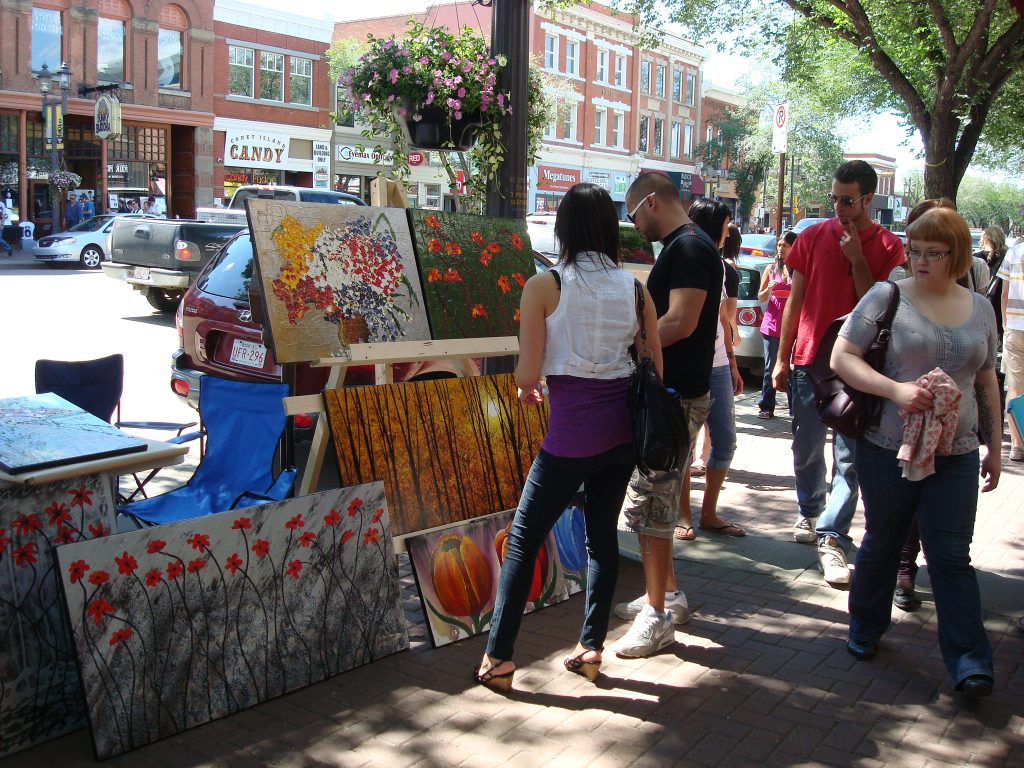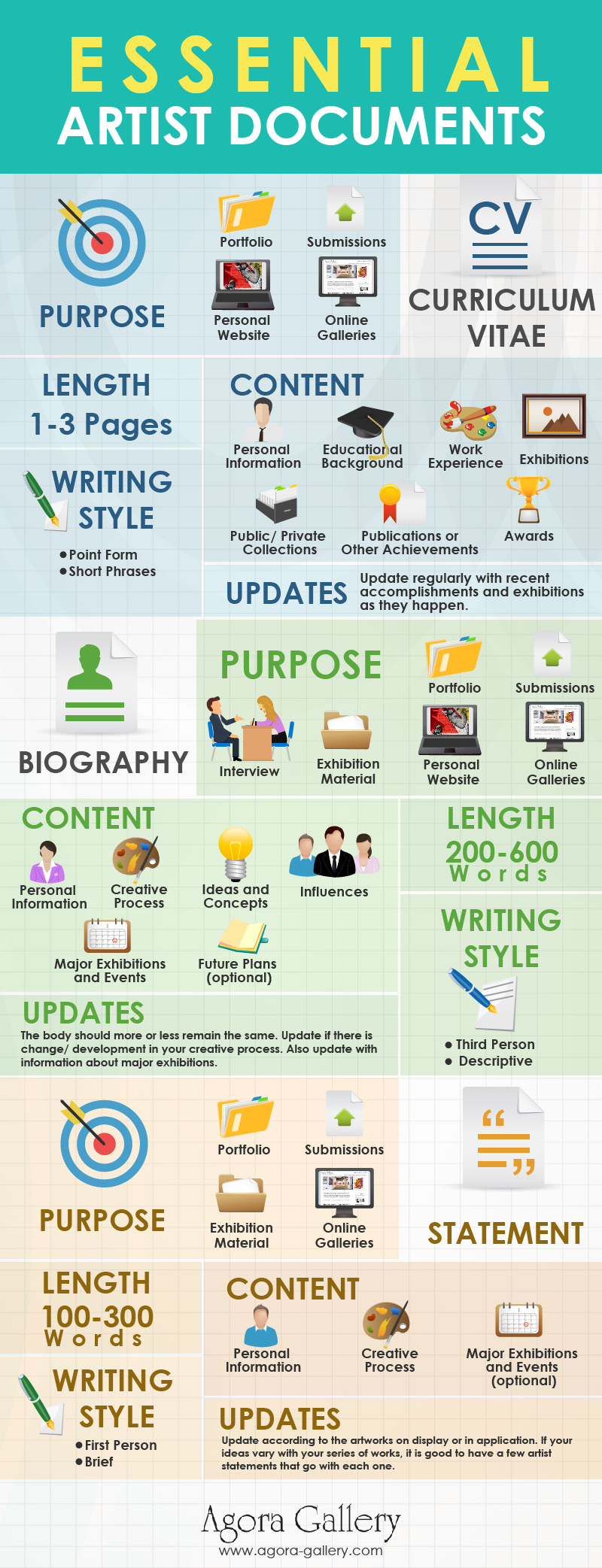You’re ready to show your work! Whether at a gallery or an Art Walk, you’re going to need to write an artist statement. The artist’s biography and artist’s statement are required documentation when submitting works for a show, gallery, or event. Most people visiting the Art Walk website don’t know you, so you need to tell them who you are, why you’re here, and why people should be interested in you. For the same reason, you might want to note your credentials, education, or exhibition experience, or choose to describe your inspiration or your artistic technique.

Writing an artist biography
A complete biography is not expected. Your Art Walk bio isn’t as detailed as your curriculum vitae, nor as philosophical as your artist’s statement. As a matter of fact, think of it as a 30-second elevator pitch.
It is an opportunity to condense your personal life to the span of a few paragraphs, but try to keep it to 100 words.
Write your artist biography in the third person
The first thing to remember is that you should write in the third person (s/he/they). Keeping that in mind, here’s a list of what to include:
- Where you are from?
- Where do you live at present?
- What you are creating?
- What is your background in your current medium?
- Describe your current projects.
Here’s a sample of a short artist’s bio:
Marvelous Mary is a contemporary abstract painter and part-time harmonica player. She received a BFA degree from the University of Somewhere, and has participated in several shows. Her paintings are mostly oil on canvas and her signature work consists of bright, bold colours, with heavily-layered impasto effects.
Writing an artist statement
An artist’s statement provides personal insight. Writing an artist statement gives you a chance to explain what you’re doing. When writing your statement, imagine talking to a potential customer while standing in front of your best work. More so, imagine describing the piece to them. You are offering insight into your art practice.
Write your artist statement in the first person
Keep in mind that you should write in the first person (I, me, my). I’ve included a handy list of what is usually covered in an artist’s statement:
- What inspires you?
- What do you want to say?
- What you are creating?
- What is your work like?
- What are your challenges?
- What is your philosophy/politics/technique?
Here’s a sample of a short artist’s statement:
My work explores the dichotomy between nature and urban spaces. What starts out as hope soon becomes corrupted, leaving only a sense of failure, but with the chance of a new opportunity.
I don’t set out determined to produce art about any given subject. My sketchbook is always close at hand, so I am constantly drawing and perfecting my craft. Some drawings stay in the sketchbook, while others develop into more in-depth ideas and detailed images.
Often, my projects consist of multiple works, in a range of different media, grouped around specific themes and meanings. During research and production, new areas of interest arise and lead to the next body of work.
There are many examples of artist statements and biographies by artists who have had shows at the Naess Gallery. Read more inspired artist statements at The Art League?
Click on the image below for more advice for writing your artist biography and statement.

